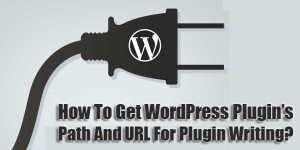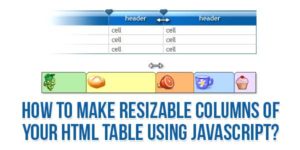
So how do you develop magical wordsmithing powers that will hook your readers right away? Every successful and compelling writer surely has a magic wand that attracts droves of readers to his/ her website and ultimately hooks them to it.
But how? You may wonder, do these writers create compelling and killer content? Well, I’m going to take you a step-by-step guide on how to achieve the same without tiring yourself out.
However, you should note that the main point is that key to achieving the most read-worthy content lies in a solid structure, well-mapped out planning, and in-depth research.
Does that sound like you? If not, then delve into the following tips to learn the art of how to write worthwhile content.
Table of Contents
1.) Know Your Audience:
Start by defining the target group of people you intend to write for. Don’t be so vague so as to include a rough estimate like “teens aged 14-16” or anything like that- just get down to something specific such as: “entrepreneurs of Site X,” where Site X is the blog or website that you are interested in writing for.
You have to go through this step whether or not you are writing content for yourself or another party. You have to clearly figure out the content that your target audience has found interesting in the past and has responded well to.
This can be achieved via the following steps:
1.) Skim Through The Blog’s Most Popular Posts:
If the site’s most popular posts are not more than ten, open them all up, read them, and curate a list based on all blog stats of a particular post including comments and shares.
And in case the website does not categorize posts according to popularity, then just go through all of them and pick out the most famous ones.
2.) Segregate These Posts Based On Patterns:
Now look for the writing patterns in the most shared posts. You will also notice that most of these blog posts have the same topics.
No one is re-inventing the wheel; they’re just tackling the same topic from different angles. Now use the same concept and pick of those very popular topics and write about it.
3.) Think About Something Unique To Offer When Writing One Of Those Topics:
Just give your readers something special, a new and unique insight to one of those topics that you have singled out.
Now let’s move to the next step.

2.) Use A Proven And Successful Headline Pattern:
You must know that it’s the headline which is the most important part of your post. So how do you write a magnetic headline? Think of the following three questions while planning a headline for your post:
- Is it catchy?
- Does it arouse curiosity?
- Is your title problem-based or is it a solution?
Alternatively, dig into resources on the web regarding headlines such as Jon Morrow’s Headline Hacks. You can use the above resources to curate good and catchy titles. Furthermore, you can even copy the style and wording (after a bit of tweaking) of the tiles from the list of blog posts that you previously rounded up.
Again, you should be looking for patterns in those blog posts and follow accordingly. For example, the most popular posts on several websites have a pattern similar to the following:
- [X number] of [X something] about [something]
- How [something] Can Teach You About [something]
The above headline patterns are proven to work well on several websites. However, you will have to perform an in-depth analysis of your own to ascertain which headline patterns suit your targeted audience based on the research you did in the previous steps.
3.) Hooking Your Reader:
After the headline, you have to concentrate on writing an opening paragraph which will instantly hook your readers so much that they will be motivated to read your article till the end.
Interestingly, the opening paragraph doesn’t need to be too long. It needs to be short, precise, and up to the point. However, you don’t have to cram the details of the post into the opening paragraph, but rather just capture the vivid details of a frustrated reader and hint at a possible solution at the end of the paragraph.
You can use catchy phrases such as, “How this common issue can be fixed” to further hook your reader at the end of the opening paragraph. So in short, hooks will describe a problem that a reader is facing in clear and vivid language and prescribe a solution based on that, as simple as that.
After describing the hook in a brief paragraph, you can now move on to the rest of the article, but don’t just jump there, make an outline.
4.) Outline Your Blog Post Into Four Distinct Sections:
Well, now that you have successfully hooked your audience, it is time to start writing the main body of the post. However, don’t just start yet; you have to divide the main body of the paragraph into four distinct sections which according to successful content patterns include:
1.) The Issue:
Which issue are you tackling and what are its symptoms? Be sure to elaborate this as explicitly as possible.
2.) The Cause Of The Issue:
So why does this issue that you’re trying to tackle in your blog post crop up? Be as specific as possible when explaining this point.
3.) The Solution:
In this part, you have to give an in-depth insight on your brilliant idea of a solution to the issue you mentioned in earlier chapters.
4.) Practical Insights On How To Implement The Solution:
In the last part of the four-point series, you will be required to explain to your readers how best they can implement the strategies that you have outlined.
So the above method is a surefire way to writing compelling content that will instantly hook you readers. It sounds simple, doesn’t it? Well yeah, it is, after all the secret to writing compelling content is consistency and organization. In fact, you should try online custom writing help from SmartWritingService.com and its brilliant content writers.

 About the Author:
About the Author:
















Wonderful articles in this post it’s very beneficial for me. Thanks to share this post.
Welcome here and thanks for reading our article and sharing your views.